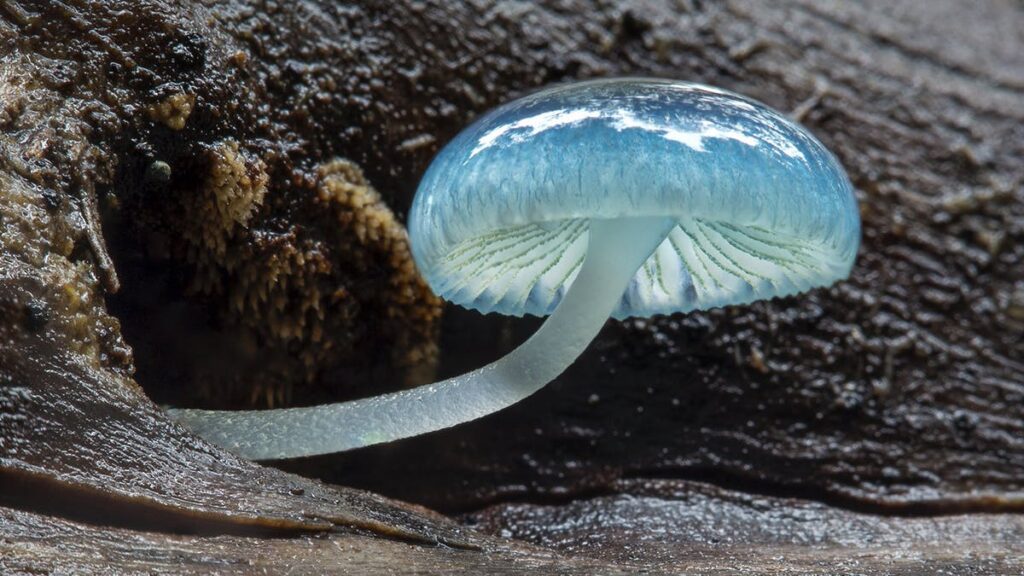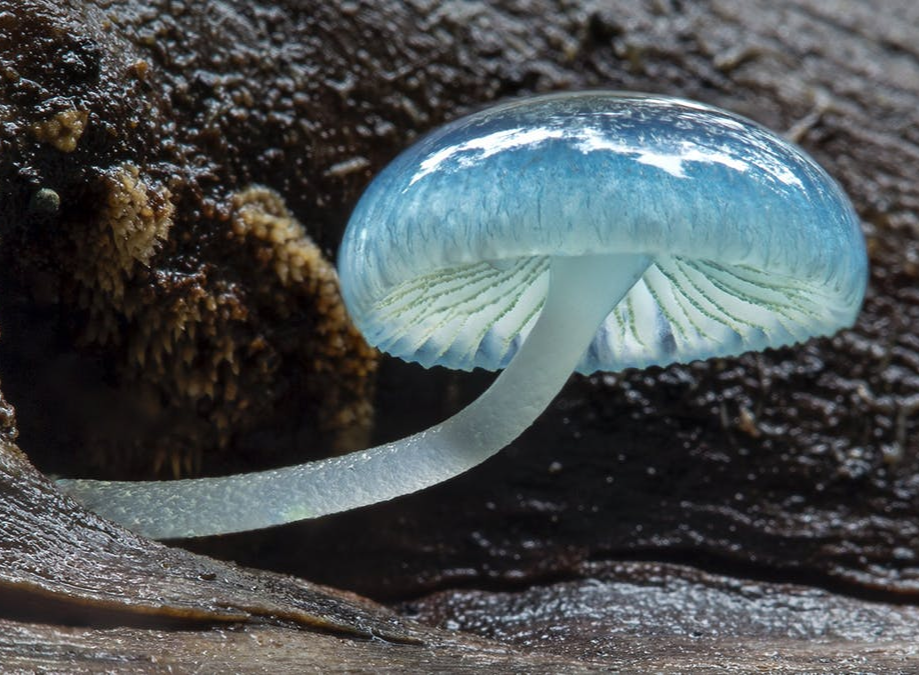Today marks the kickoff of the annual Burning Man event in the middle of the Nevada desert 🏜 The 36-year-old festival has come a long way since its humble origins, and so has the conversation around psychedelics.
While psychedelic drugs like MDMA and psilocybin (aka magic mushrooms) have a long way to go before they hit mainstream acceptance, there is a ton of interesting stuff happening behind the scenes.
Medical research is pouring in, Phase 3 clinical trials are underway, states and countries are carving out new rules, and entirely new markets are forming right before our eyes.
For some investors, it’s a world they know nothing about and are too skittish to enter. And that’s fine. For them, the doors will remain closed. 🚪
But for others, this is a gold rush.
What’s behind the sudden groundswell of change? And where is it all going next?
Let’s fling these doors wide open. Let’s break down what’s happening in this world 👇
(Note: This is Part 1 in our series on investing in psychedelics. Here’s Part 2)
Editor’s Note: This issue is rated MA-17 as it contains references to drugs and psychoactive substances. 😂 Alts does not condone the illegal use of drugs, and we hold no judgement or opinion on what you choose to put in your body. Just like investing, the use of any drug always carries some risk. This is not investment advice or psychic advice.
Table of Contents
What are psychedelics?
This may sound like a dumb question, but it’s not.
Psychedelic drugs are substances that bind to the 5-HT2A serotonin receptor. Serotonin receptors influence critical brain & body processes like mood, anxiety, learning, memory, and sleep.
Psychedelic compounds attach to this 5-HT2A receptor, which triggers changes in sensory perception and cognition. If the system gets flooded with enough compounds, the body cannot absorb them in time. When this happens, it creates a backlog, or what’s known as a “trip,”
Trips affect your brain and body in both the short-term and long-term. They can provide short-term euphoria and long-term therapeutic benefits. Interestingly, scientists believe you may not actually need to trip to get these benefits! This is important. We’ll come back to this later.

What are the main psychedelic drugs?
The major psychedelics are:
- LSD. Developed in a lab in 1938, LSD is arguably the most well-known psychedelic. But it wasn’t the first to be synthesized.
- Mescaline. Mescaline was first isolated in 1897 but has been used as peyote for 5,700 years. It’s naturally occurring in cacti plants native to Mexico and the southwestern US.
- Psilocybin. Contrary to popular belief, psilocybin is produced by more than 200 mushroom species. 9,000-year-old cave paintings suggest human usage predates recorded history.
- MDMA (Ecstasy) is both a psychedelic and a stimulant. First developed by German pharmaceutical company Merck in 1912.
- DMT. Naturally occurring, has been consumed by the people of South America for 1,000 years in the form of Ayahuasca. Considered by many to be the strongest psychedelic known to man.

These substances have a few things in common: Three are naturally occurring, dating back thousands of years, and all have been classified by the DEA as Schedule 1 drugs.
Why are psychedelics illegal?
In theory, psychedelics are illegal to protect people from themselves.
Under the Controlled Substances Act of 1970, Schedule 1 drugs like psychedelics are considered to have a high potential for abuse and no medical value. While one could argue their illegality is well-intentioned, this designation has led to some enormous hypocrisy.
Alcohol is the most abused substance in America, ahead of tobacco and way ahead of marijuana (which is somewhat incredibly still classified as Schedule 1).
And that’s to say nothing of commercially available prescription drugs. Prescription opioids like Fentanyl have been responsible for an overdose epidemic. In 2020, America had 92k overdose deaths, and 75% of these ODs involved an opioid.
As of 2020, the number of Americans abusing prescription drugs hit 16 million.
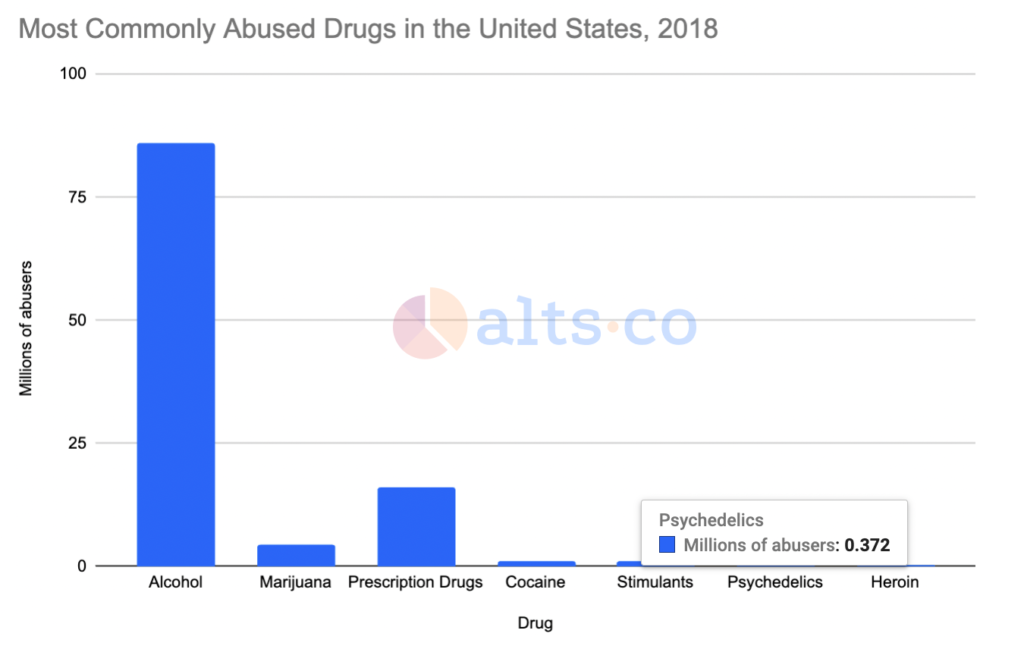
A drug’s schedule sets the groundwork for federal regulation. If a drug is Schedule 1, it means it’s essentially illegal for anything except research.
While there have definitely been studies showing marijuana has medical benefits — particularly for pain, nausea, headaches, and muscle aches — these studies haven’t been large enough to meet the thresholds set by the DEA and FDA,
To prove a drug has medical value, you need controlled, large-scale clinical trials.
And these trials are starting to happen.
The mainstreaming of psychedelics
If you feel like this stuff is going mainstream, you’re not alone.
On his podcast, Joe Rogan routinely talks about DMT. Michael Pollan’s book and Netflix series, How to Change Your Mind, has done exactly that for millions of people.
Joe Rogan and Michael Pollan. Two bald guys who love taking & talking drugs.
So sure, Rogan, Pollan, and dozens of other high-profile folks are getting on the psychedelics train. But that’s not what’s going to move the needle.
Forget that celebrities are talking about it. Forget that negative perceptions are fading and acceptance of recreational use is increasing. Forget that music sounds better while on drugs (or so I’ve heard). Forget all that.
What’s really going to move the ball forward is therapy. Health. Especially mental health.
If you can prove these drugs are therapeutic, you can show their medical value. And that’s just what research institutions & companies are starting to do.
The FDA’s drug approval process
It all starts with the FDA. To bring a drug to market, you do clinical trials before a drug application review.
There are 3 phases:
Phase 1
Phase 1 is all about understanding safety. The approval process wasn’t designed for speed; it was designed for safety. That’s the number one goal here. A small sample of volunteers is given the drug, and side effects are measured like crazy. If successful, the drug moves to Phase 2. If not, it’s over.
Phase 2
Phase 2 trials are designed to understand effectiveness. The drug is given to a larger sample of patients with a specific disease or condition, and results are compared against a placebo or a different drug. If successful, it’s on to Phase 3. If not, the trial ends.
Phase 3
In Phase 3, the drug is given to thousands of patients. Everything is measured here: safety, effectiveness, dosage, everything. If successful, the drug can go to New Drug Application (NDA) Review and then selling approval. If unsuccessful, it’s all over.
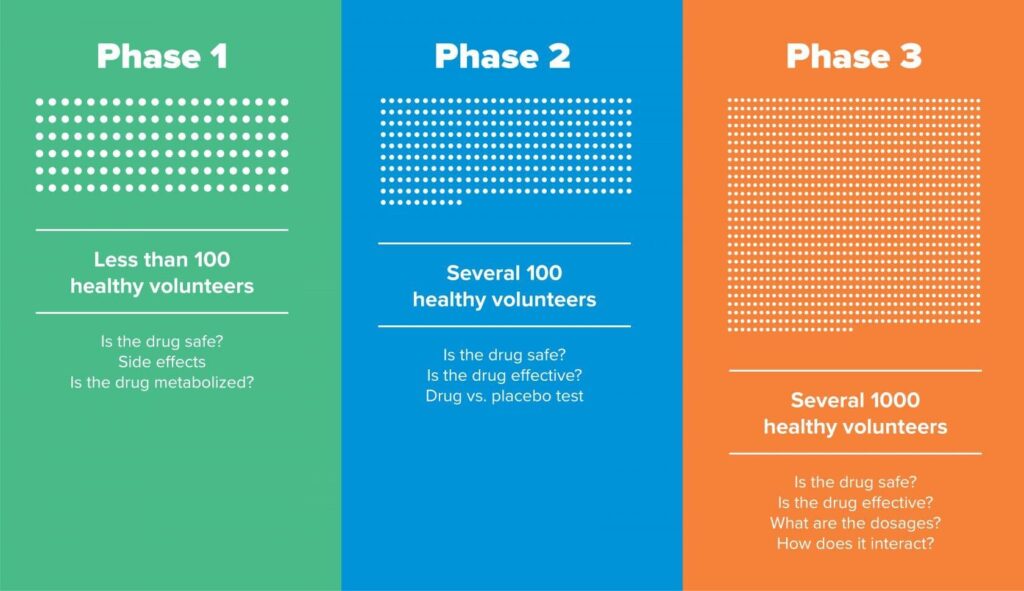
Getting through the process takes 10-15 years and costs about $37 million, meaning only large companies and research institutions can afford to sponsor drugs for approval.
The history of psychedelic research
During the 50s and 60s, a ton of research was happening around LSD, MDMA, and Psilocybin. The CIA even got involved in experimentation, and at one point, LSD was considered the next big thing in psychiatry.
But in 1970, the Controlled Substances Act designated all psychedelics as Schedule 1 drugs with no medical value. It seemed the party was over.
Then in 1986, something interesting happened: MAPS was born.
MAPS (or the Multidisciplinary Association for Psychedelic Studies) was a radical new organization founded by Rick Doblin. MAPS is a San Jose-based nonprofit whose goal is to bring increased psychedelic research and education to the masses.

MAPS takes an incremental approach to radical change, and has been extremely effective. During the 90s, they pushed the ball forward, raising funds, completing Phase 1 clinical trials, and normalizing the conversation around psychedelics — especially MDMA.
MAPS has been the driving force behind some of the most important legal & regulatory movements in history. Their biggest win has been the medicalization of MDMA-assisted therapy for post-traumatic stress disorder (PTSD), which affects 12 million Americans each year.
In 2017, the FDA granted Breakthrough Therapy designation to MDMA for the treatment of PTSD. After thirty years of study, sweat and tears, Phase 3 trials are now complete. In March, researchers officially concluded that therapy combined with MDMA is efficacious, safe, and highly effective in treating severe PTSD.
In a nutshell, they found that 2/3rds of PTSD patients were no longer clinically diagnosed after MDMA treatment.
Mind you, this isn’t just curbing the symptoms like other drugs. This shows the root cause is gone! The patients are no longer medically diagnosed with severe PTSD.
Tremendous win. 🏆
The state of psychedelic research today
Research institutions
Doblin’s efforts effectively opened the door to psychedelic research in humans. Since the FDA’s designation, a groundswell of new research came out from some of the world’s top universities and nonprofits.
- Johns Hopkins University led the way. In 2017, they found that, when combined with meditation, small doses of psilocybin brought about lasting changes in altruism, gratitude, and connection to others.
- Imperial College of London was the other big leader. They found that psilocybin coupled with psychological support markedly reduced symptoms of anxiety and depression in twelve patients with unipolar treatment-resistant depression.
- The Beckley Foundation is a drug reform think-tank and UN-accredited NGO led by Amanda Fielding. In 2016, in collaboration with the Imperial College of London, they released the world’s very first scanning images of the human brain on LSD.
Other key studies have come from The Usona Institute, Yale, and NYU, which just established a $10m Center for Psychedelic Medicine with the help of MindMed.
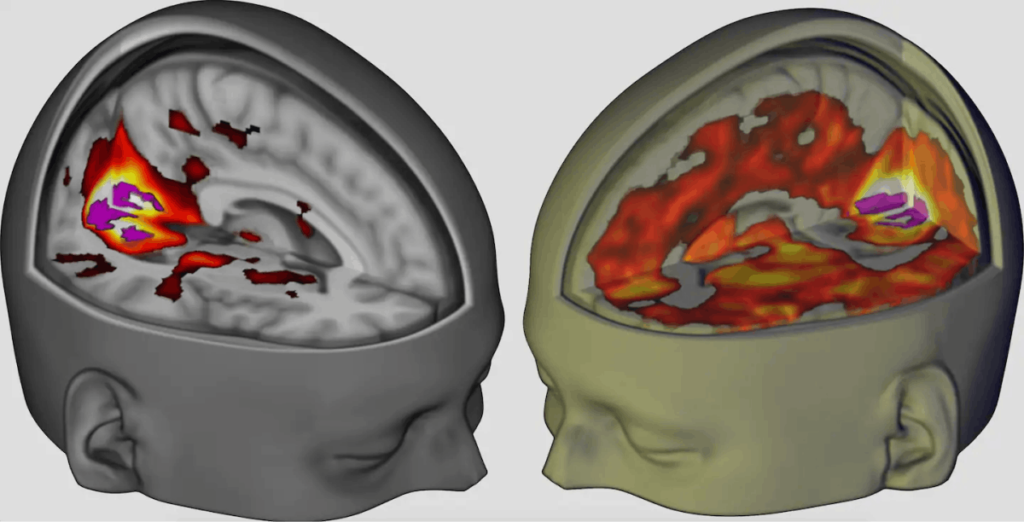
Private companies
Companies are now licensing out this research and picking up where institutions left off. Entirely new companies have been created around it.
- MindMed. Founded in 2019 by a Y-Combinator alum, MindMed had raised $176m from investors — outpacing their competitors in funding. They were the first psychedelic pharmaceutical company to go public.
- Atai Life Sciences is a German pharmaceutical company focused on mental health treatments, including depression, anxiety, and schizophrenia.
- Compass Pathways. Backed by Peter Thiel, Compass received Breakthrough Therapy designation from the FDA in 2018 for its psilocybin therapy to treat depression. They went public in 2020 to raise funds for clinical trials, but the stock fell in November 2021 after concerns of adverse events.
Other notable companies include Canada-based Numinus Wellness and HAVN Life Sciences, which is building a “psychedelic supply chain” for clinical researchers — supplying its psilocybin products for use in studies worldwide.

Where is psilocybin legal?
Psilocybin is the furthest ahead of all the psychedelics on the path to legality. But despite all the progress that has been made, psilocybin is still illegal in most countries.
Legality isn’t a black or white thing. Laws vary for possession, sale, transport, and cultivation — and there are a slew of countries with “unenforced” laws. (Indonesia, for example, has a notoriously harsh stance on drugs. Yet magic mushroom cafes are abundant in Bali)
There are a few countries that are leading the way:
Canada
While Canada has not made psilocybin legal, they are leading the world in research and funding. Their new Special Access Program makes it easy for healthcare professionals to obtain drugs not yet available for sale, if they can show a patient may benefit from a drug (and psychedelics don’t need to be dispensed in a therapy setting!)
The first country to legalize cannabis, Canada, has also made it really easy to get an active pharmaceutical ingredient license (Canada’s equivalent of the DEA).
Bahamas
Magic Mushrooms are fully legal in the Bahamas, where psychedelic retreats are common. One hotel even offers DMT treatment. As a result, The Bahamas are quickly becoming an internationally renowned psychedelic tourist destination.
Brazil
Psilocybin is listed as illegal, but the mushrooms themselves are not. Mushrooms are sold mainly via specialized websites. Brazil has also legalized Ayahuasca.
Jamaica
Psilocybin mushrooms have never been made illegal and are openly sold in Jamaica. In 2021, Jamaica’s first legal psychedelic mushroom retail outlet was opened, and many more ‘shroom shops have popped up since.
United States
The United States started the War on Drugs and strong-armed much of the world into following its lead. But while psychedelics are still illegal at the federal level, it’s a very different story within certain states.
The state furthest advanced is Oregon, whose residents recently voted to decriminalize psilocybin and legalize it for mental health treatment. By the end of 2023, all Oregonian adults can legally receive psilocybin therapy at licensed centers. Other states are now considering legalizing the same type of clinical access.
It gets even more interesting at the city level. Denver, Oakland, Santa Cruz, and Ann Arbor have all decriminalized the drug, and in September, the San Francisco board of supervisors is discussing a resolution to follow suit.

Australia
Here in Australia, we’re a bit embarrassingly behind the eight ball in terms of therapeutic cannabis, let alone other Schedule 1 drugs. However, in 2021, Australia’s Health Minister announced a $15m federal grant to study how MDMA, ketamine and psilocybin can be used to treat mental health conditions.
And just last week, private health insurance company HIF announced they would become the first Aussie health insurance company to offer insurance for psychedelics.
Who’s investing in psychedelics?
Investing in biotech is notoriously volatile, and the world of psychedelics is no different. It’s not for the faint of heart.
New compounds are very expensive to create, and there is a huge risk they’ll fail during testing. One bad clinical trial can tank a stock. And even if the drug’s efficacy is proven and it wins regulatory approval for pharmaceutical sales, it’s still possible they won’t achieve commercial success.
There are now over 50 publicly traded companies focusing on psychedelics, but since February 2021 the sector has been getting slammed. It seems all of the upside is on the private side, captured by biotech venture investors who are generally up between 200 and 400% YoY.
Some of these VCs include:
- Empath.vc, whose investments include Wavepaths, a music integration platform to guide people through a psychedelic experience, and Nue Life, a telehealth platform specializing in guided ketamine therapy.
- JLS.fund invests at the intersection of psychedelics and technology. Along with investments in now public companies MindMed and Atai, they’ve invested in coaching apps like Mindleap Health and psychedelic accelerators.
- Iter Investments is run by Dustin Robinson, who was a tremendous help on this issue. More info on Dustin below.
- 5dventures. Unlike other psychedelics VCs that focus on biotech, 5D’s “Progression of Consciousness Fund” is the only psychedelic fund focused on investing in psychedelic retreats.
Speaking of which, wellness retreats are becoming extremely popular amongst tech workers and folks looking to dramatically unwind post-pandemic.
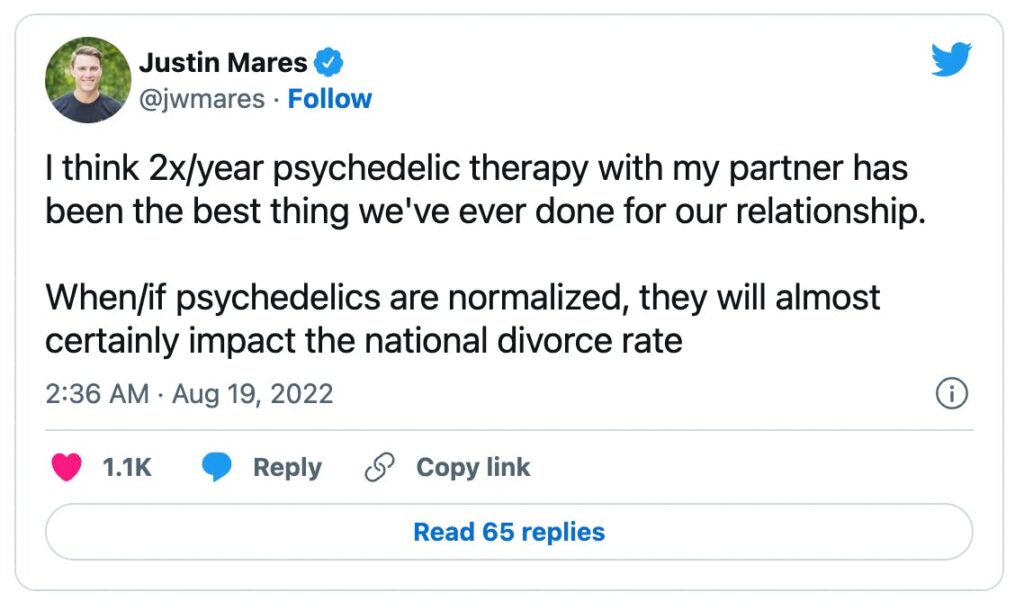
Silo Wellness may be a company to watch here. They operate private, luxury wellness retreats at beautiful resorts, and just announced five new retreats in Jamaica.

What’s next for psychedelics?
Full commercial legalization is still a bit of a pipe dream, but the world is seeing really promising results come out of clinical trials in the US.
For psilocybin, funding is strong, and multiple Phase 2 clinical trials are underway. MDMA is in Phase 3, and will likely be the first psychedelic drug to be pharmaceutically available. (Again, public availability is a whole other story.)
DMT is a bit further behind. A couple of Phase 1 clinical trials have begun, but I think DMT/Ayahuasca has a higher hill to climb. Long-term usage causes some very significant and measurable changes in brain chemistry that deserve to be studied intensely.
But by far, the most interesting to me is what’s happening with non-traditional compounds.
New altered states
All the drugs we’ve discussed in this issue are what’s known as Gen 1 compounds. This means they are all well-known substances companies cannot get patents for. But Gen 2 compounds are analogs of those compounds.
We have altered states of consciousness that we know about. Some are from compounds that are naturally occurring and others are synthetic. But that doesn’t mean that altered states of consciousness are limited to those drugs that we know about already. LSD and MDMA were discovered in a lab, but they last too long. How many better derivatives could be created?
For example, a psilocybin trip takes 6-8 hours for a trip. But nobody with severe depression wants to be holed up in a clinic for that long. So companies are working on tweaking the molecule so it kicks in faster and with more consistency.
This would, in effect, be a new drug. And a potentially patentable one.
Treatments without trips (?!)
Finally Gen 3 compounds are compounds that are “psychedelic inspired.” As you recall from above, psychedelics hit what’s known as the 5-HT2A receptor. But they also hit a lot of other receptors along the way. So companies are now researching psychedelic compounds that attach to the 5-HT2A receptor without hitting receptors we don’t want them to hit.
Even crazier to think about is the reverse of that.
That’s right, some companies are researching compounds that hit all receptors except the 5-HT2A. The thinking is this: We know that psychedelic trips build neuroplasticity in the brain. But it could be that the physiological changes come from activating the other receptors. Meaning you may not even need the subjective experience of a trip to build that neuroplasticity.
In other words, the trip itself may not be necessary to get the therapeutic value. You could theoretically create psychedelic compounds that are not actually psychedelic!
California-based Delix Therapeutics, for example, is looking to create treatments from psychedelics that don’t actually have hallucinogenic properties.
Now that is mind-blowing.

Closing thoughts
Humans have been using psychedelics for nearly ten thousand years. This stuff is ancient. Older than the trees.
For 50 years, they’ve been prohibited and declared to have no medical value. But now we’re learning they can really help us.
Psychedelics-related startups have raised over $236 million in the past 12 months (up 245% YoY), clinical trials are coming back with terrific results, and more are in the pipeline. Psychedelic therapy has gone from wacky voodoo mysticism to solid science. We’ve come a long way.
Yet, until organizations like MindMed and Compass Pathways conclude Phase 3 clinical trials and secure regulatory pharmaceutical approval, patient access will remain mostly limited to underground treatments and psychedelic retreats.
Community member Josh Hardman notes there are opportunities to use crypto to help funnel funds into the space. What could be really alternative is looking at DAOs for investing in drug development. New drugs have a 90% failure rate, and a minimum investment in a private biotech startup is usually around $25k (and generally reserved for accredited investors.)
DAOs could potentially provide a way for retail investors to access a basket of drug candidates in a fractionalized manner. An interesting project in the space focuses on drug development IP called molecule.to. But Hardman also notes DAOs like this have been painfully slow to get off the ground.
I think George Goldsmith, Compass Pathways Co-Founder put it best:
This isn’t a place to be fast and loose…It’s a place to do the highest quality science at the biggest and best scale you can. We need to get it absolutely right. Psychedelic research was out in the cold for 50 years. If we get it wrong, will we have to wait another 50?
